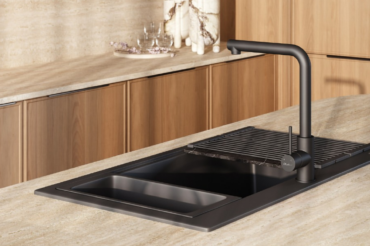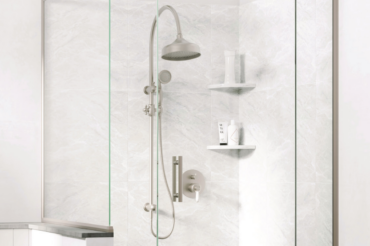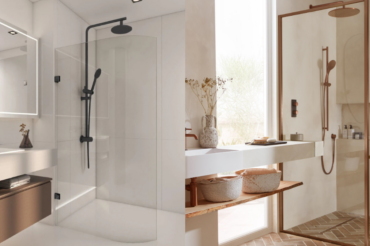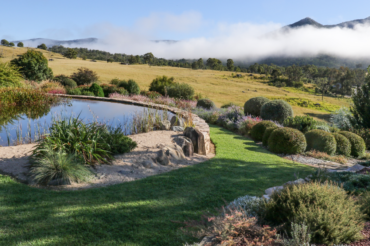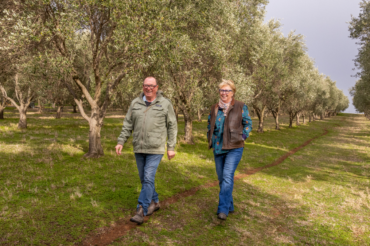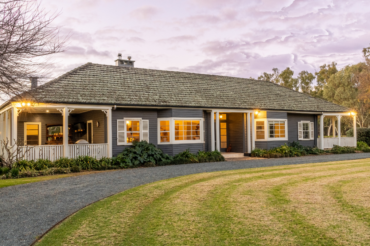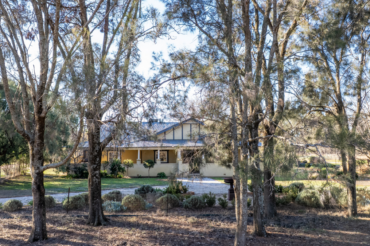
The village of Longford in Tasmania’s north-east is noted for its many historic buildings, most built with the symmetry and classic proportions of the Georgian era.
Visitors to the town located 27 kilometres south of Launceston come to wander around the many colonial buildings and churches, browse in the antique shops and visit nearby Brickendon and Woolmers Estates with their famous rose gardens, both listed as UNESCO World-Heritage convict sites.
If they happen to visit during the November Longford Blooms open-garden festival, they might also catch a glimpse of Longford House, a gracious residence on the outskirts of town. Longford House was built by Joseph Solomon around 1834 in the classic style with Doric columns on the portico. It’s similar to the nearby National Trust-owned Franklin House and is an exemplar of the architecture of the period. Features include multi-paned sash windows mirrored on both sides and levels, and high-ceilinged interiors showcasing crown cornices, ceiling roses and extensive timber joinery.

However, as the present owners, Andrew and Meredith Meeves point out, it has some quirky features. They include a double-seated outhouse, a feature wall of convict thumbprint bricks, two wells which were revealed when tidying up the gardens and a semi-circular wall which is cracked due to a draught horse pushing through the archways. There is also a rare hollow English ash tree that a tennis-racquet company wanted to mill, as well as several uncommon yew trees and hawthorn hedges on the property.
In 1849, the house became Longford Grammar school and W.H.D. Archer from Brickendon was one of its star pupils. Subjects studied included Greek, Latin, geometry, astronomy, trigonometry, history, parsing and geography.

The school was moved to Launceston in 1854 and Longford House later became a girls’ school known as Longford House Establishment for Young Ladies. It was mentioned in the news at the time as being for those “who were desirous of respectability being instructed in French, drawing, embroidery and music”. When Longford House was offered for sale in 1854, the local papers advertised the sale as “a noble mansion, domain and garden. The edifice is handsome, extensive and commodious with every accommodation of offices, outhouses, prolific garden and wells of the purest water.”

In 1862, the house was sold to William Pitt, an ex-convict from Bristol. The house was offered with 74 acres (30 hectares) of land. William had eight children and he passed the property onto his second son, James, who had 11 children. The final Pitt family owners were James’ unmarried children, Strath and Mary.
When Mary died in 1985, the furniture, which had come from nearby Clarendon House in the 1860s, was sold at auction. When the house was sold in 1991 it had been in the family for 129 years. It was a renovator’s delight as it didn’t have running water, flushing toilets or electricity as Mary had wanted it kept in original condition. Longford House then passed through a succession of owners until Andrew and Meredith bought it in 2020.

When the Meeves took over, the garden needed TLC. “Fortunately, we both enjoy working in it,” Andrew says. It’s therapeutic and keeps us fit. Bringing it back to life has been a labour of love. We’ve added appropriate plantings and geometric garden beds in line with the Georgian architecture. Each season is well-defined and has its special beauty.”
The grounds had good bones, with a parkland-style garden protected from the strong prevailing winds from the nearby Western Tiers by rows of cypress pines. It included an advanced wisteria walk, a quince walk and orchard. The Meeves have devoted considerable effort to restoring hawthorn hedges that surround the property and, during spring, delight in drifts of daffodils under the silver birches and a crabapple orchard that becomes a blaze of deep pink in spring and later is suffused with orange and yellow tones in autumn. They’ve added a parterre garden and fountains and thousands of flowering plants and trees including heritage roses and clematis, stands of lipstick maples for more autumn colour along with the ash, oak and elm trees.

Andrew and Meredith also have plans to reinstate more fruit trees and construct possum- and wallaby-proof vegie gardens. Meredith, whose background is in environmental science, is also in the throes of establishing a natural skin-care range based on first-pressed raw, high-quality oils.
Andrew and Meredith were sufficiently satisfied with their progress to open Longford House for the first time last year for the annual Longford Blooms festival. “It was impetus to push forward with the gardening work as we had a deadline to work to,” Andrew says.

Longford Blooms allows the public to view many beautiful private gardens with the funds raised assisting The Helping Hand Association, a local charity that provides support to people needing emergency assistance, and Care for Africa, an aid organisation that supports people in Tanzania with medical, sanitation and education needs as well as empowering women and girls. “Some of the open gardens have stalls selling rare and unusual plants and garden craft as well as food stalls,” Meredith explains. “It’s a wonderful event to be part of.”
Andrew and Meredith say they don’t expect to see all the fruits of their gardening efforts. “We are custodians of the property and when it comes to planting slow-growing trees, you don’t do it for yourself,” Meredith says. “You do it for future generations to enjoy.”

